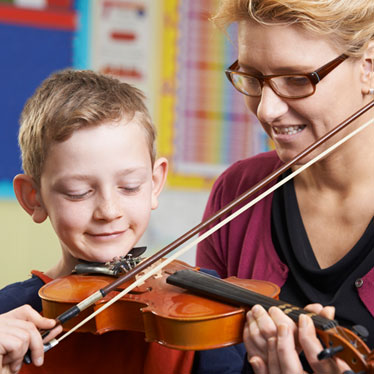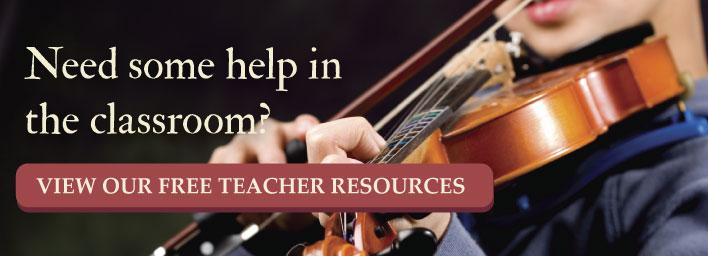Comparing Popular Violin Teaching Methods

If you’re interested in learning how to play the violin, you might be a little confused about the number of teaching methods available. Because the violin is a beautiful but difficult instrument to learn, various training methods have evolved over time, and you now have a choice in what type of instruction to take. In fact, the available methods are quite diverse. Everyone learns differently, and therefore, the training you choose should be tailored to your learning style.
Fortunately, you have a selection. The following information outlines some of the specifics involved in each system, offering an overall view of each method for your consideration. By examining these popular violin teaching methods, you’ll be armed with the information you need to make the best choice for your learning needs.
Traditional Learning Techniques
Traditional teaching methods are perfect for individuals who learn better alone. They focus on learning basic playing techniques and introduce music reading to students in a gradual fashion. For example, you first learn to play an open note using the bow and you learn the rudiments of notation such as values, timing, and recognizing notes on the treble clef.
There is minimal group interaction with traditional violin teaching methods. You basically learn on your own or with an instructor during private lessons. This type of training works well if you want to take your time and learn at your own pace, but it’s easy to fall off if you’re not dedicated.
Mimi Zweig (String Pedagogy)
With a host of accolades, awards, and a stellar performance career, Mimi Zweig is one of the foremost violin instructors today. Her String Pedagogy online course is designed to teach the fundamental aspects of playing violin based on natural motions in a supportive environment. By stressing the importance of physical freedom, confidence, and sensitivity, her method of instruction is effective and fun. One of her former students, Joshua Bell credits her as a “vital, important part of [his] musical development” (The Journal Sentinel, Milwaukee).
In fact, her free online course is perfect for anyone interested in learning to play the violin. It includes six hours of streaming video and tons of specific information new students need.
Suzuki Method
This method, which was once considered a philosophy by its creator, has gained in popularity over the past two decades. Named for Shin’ichi Suzuki, it’s based on the concept that you learn by absorption, such as how children learn to speak before they have the ability to read.
With the Suzuki method of learning the violin, parents take an active part in the child’s training. In fact, it’s designed to start very early, around age three. Essentially, students are surrounded by the music they learn to play. The recordings are listened to over and over and over. There are ten books used for the method, and it also allows students to make progress at their own pace. The main downside of the Suzuki method (and there’s really only one or two) is that students don’t learn to read music right away.
However, the Suzuki method is a favorite among instructors because it really helps develop intonation quickly. Students do learn to read music, but only after they have mastered holding the violin and producing good sound. Typically, by the time that aspect is included, students have a firm grasp of the instrument and easily transition to learning notation.
Yuri Yankelevich (The Russian Violin School)
Yuri Yankelevich (1909 - 1973), “a student and assistant of Abraham Yampolsky, was greatly influenced by the teachers of the Soviet School,” which was founded on principles of “scientific inquiry and physiology,” and he eventually became one of the “most important pedagogues of his generation” (Oxford University Press). In one of his works, ‘Shifting Positions in Musical Context,’ he stresses the “understanding [of] the neurological connections between our inner ear and our muscles, and the role of our conditional reflexes” (The Strad). The idea being that using props, such as fingerboard marks or making contact with the body in third position, actually hinders real advancement. His teachings have produced a lasting legacy, and you can learn more about it by reading his works.
Choosing a Violin Method
It’s important to remember that the ultimate goal is learning to play the violin. That in mind, if you start with one method, don’t be afraid to change it if it isn’t working for you. The best way to choose a violin method is to gain information. Talk to other people who’ve tried different learning styles. Research techniques online, and if possible, view a few sample lessons. Your main guide should be your personal preference. Training to play the violin using a method that works with your learning process and personality will create better results and a more satisfying experience.


